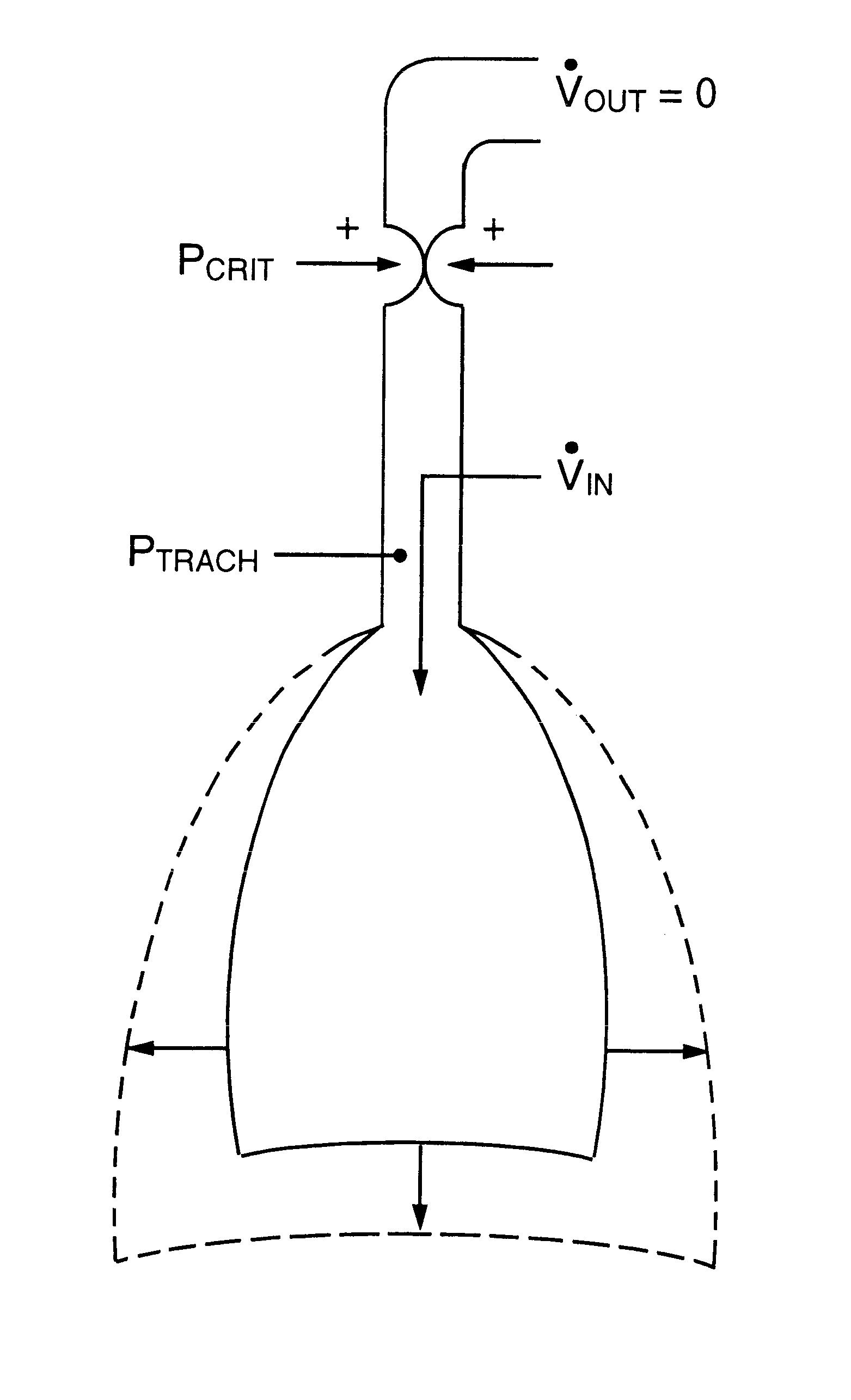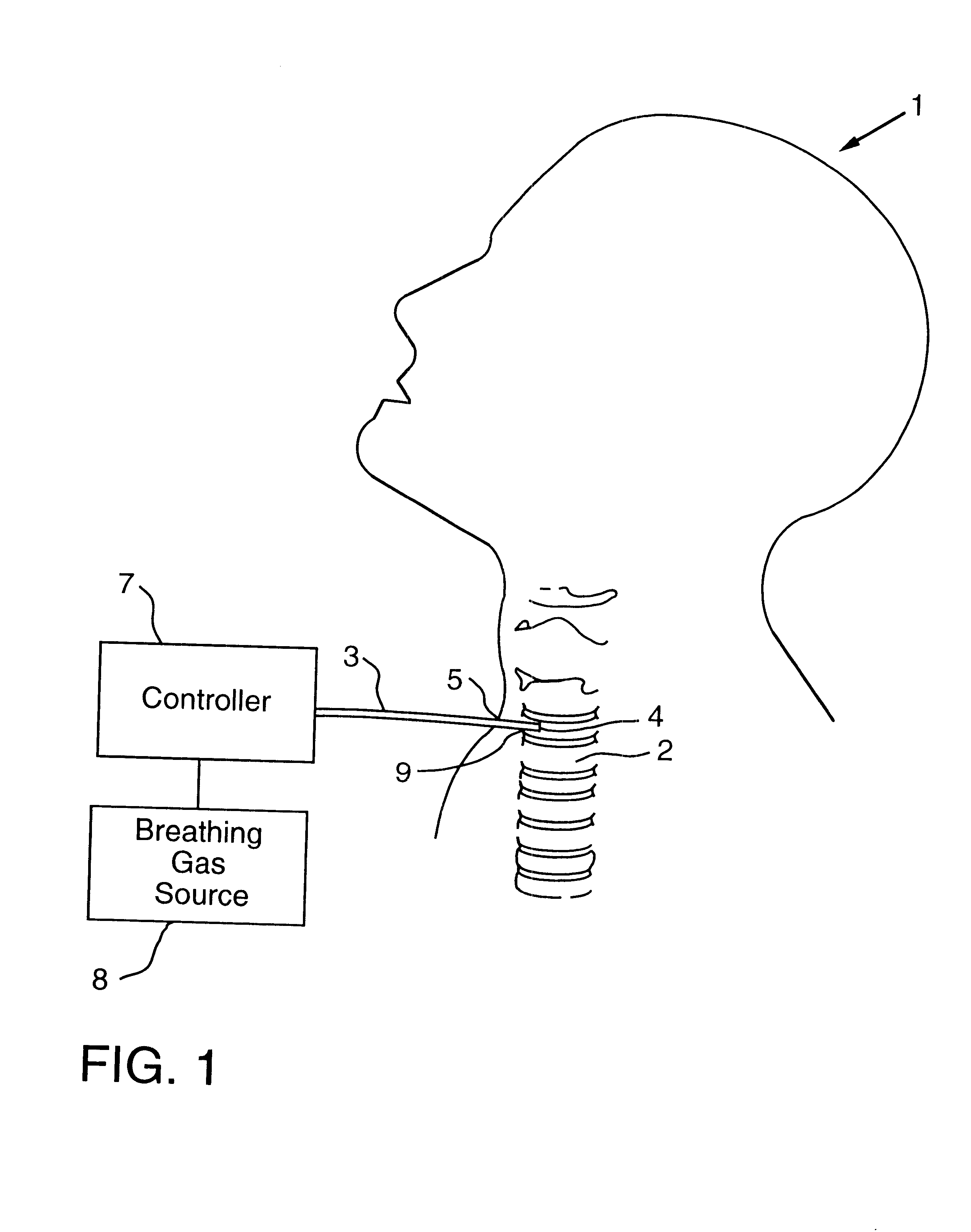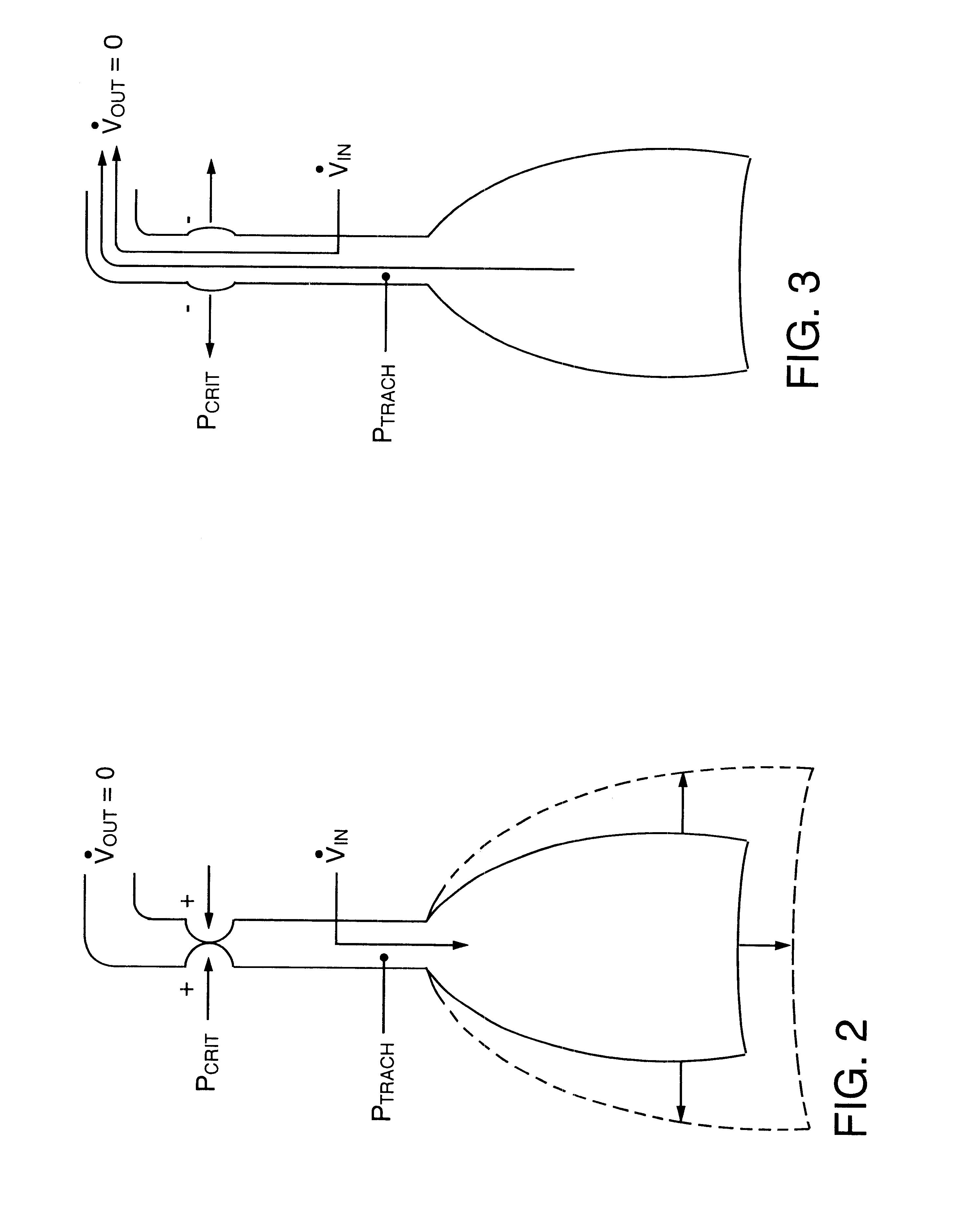Method and apparatus for providing ventilatory support to a patient
a ventilator and patient technology, applied in the direction of respirators, operating means/release devices of valves, diagnostic recording/measuring, etc., can solve the problems of inability to breathe adequately, affecting the function of ventilators, and affecting the patient's ventilatory function,
- Summary
- Abstract
- Description
- Claims
- Application Information
AI Technical Summary
Benefits of technology
Problems solved by technology
Method used
Image
Examples
Embodiment Construction
Five tracheostomized patients with obstructive sleep apnea were studied. These patients were chosen because of their unique upper airway physiology that is characterized by the development of a positive P.sub.CRIT during sleep. In addition, the tracheostomy provided direct access to the trachea for pressure monitoring and transtracheal insulation (see below).
In these patients, the tracheostomy was occluded and a thin transtracheal (SCOOP, Transtracheal Systems, Inc., Denver, Colo.) cannula was inserted through a tracheostomy cap through which transtracheal insufflation was administered at flow rates up to 45 liters / minute. Tracheal pressure was monitored with a stub adaptor inserted into the tracheostomy cap. Pressure in the pleural space (esophagus) outside the lungs (P.sub.ES) was monitored with a standard esophageal balloon catheter placed perinasally in the mid-esophagus. Airflow coming out the upper airways V.sub.OUT was monitored with a tight fitting oronasal face mask. Standa...
PUM
 Login to View More
Login to View More Abstract
Description
Claims
Application Information
 Login to View More
Login to View More - R&D
- Intellectual Property
- Life Sciences
- Materials
- Tech Scout
- Unparalleled Data Quality
- Higher Quality Content
- 60% Fewer Hallucinations
Browse by: Latest US Patents, China's latest patents, Technical Efficacy Thesaurus, Application Domain, Technology Topic, Popular Technical Reports.
© 2025 PatSnap. All rights reserved.Legal|Privacy policy|Modern Slavery Act Transparency Statement|Sitemap|About US| Contact US: help@patsnap.com



